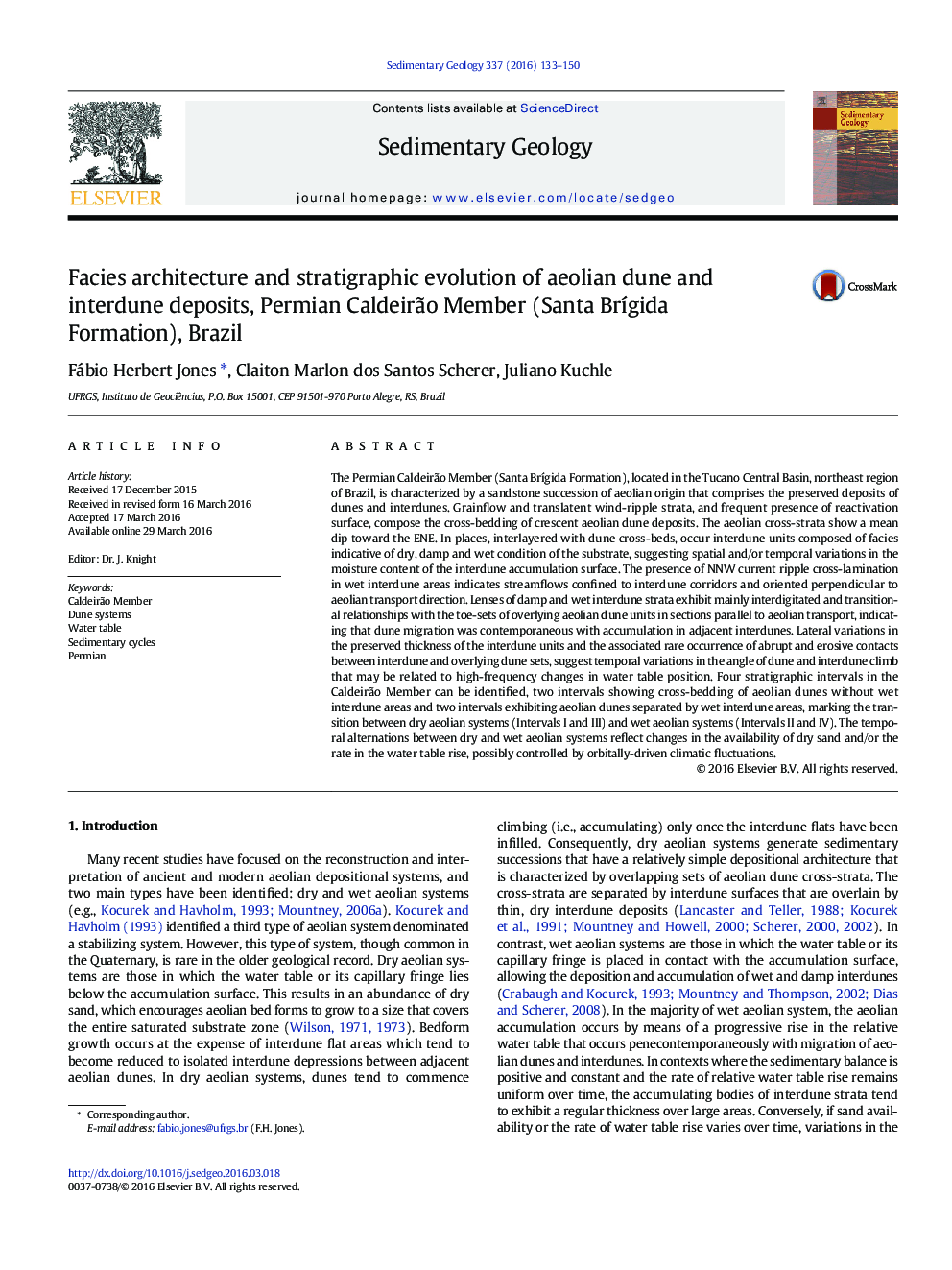| Article ID | Journal | Published Year | Pages | File Type |
|---|---|---|---|---|
| 4689036 | Sedimentary Geology | 2016 | 18 Pages |
•Caldeirão Member is composed of two facies associations: aeolian dune and interdune.•Interdune deposits occur at specific intervals in the stratigraphic succession.•Four depositional intervals can be observed in aeolian succession.•The intervals alternate between dry and wet aeolian systems.•Temporal alternation between intervals may be related to climatic fluctuations.
The Permian Caldeirão Member (Santa Brígida Formation), located in the Tucano Central Basin, northeast region of Brazil, is characterized by a sandstone succession of aeolian origin that comprises the preserved deposits of dunes and interdunes. Grainflow and translatent wind-ripple strata, and frequent presence of reactivation surface, compose the cross-bedding of crescent aeolian dune deposits. The aeolian cross-strata show a mean dip toward the ENE. In places, interlayered with dune cross-beds, occur interdune units composed of facies indicative of dry, damp and wet condition of the substrate, suggesting spatial and/or temporal variations in the moisture content of the interdune accumulation surface. The presence of NNW current ripple cross-lamination in wet interdune areas indicates streamflows confined to interdune corridors and oriented perpendicular to aeolian transport direction. Lenses of damp and wet interdune strata exhibit mainly interdigitated and transitional relationships with the toe-sets of overlying aeolian dune units in sections parallel to aeolian transport, indicating that dune migration was contemporaneous with accumulation in adjacent interdunes. Lateral variations in the preserved thickness of the interdune units and the associated rare occurrence of abrupt and erosive contacts between interdune and overlying dune sets, suggest temporal variations in the angle of dune and interdune climb that may be related to high-frequency changes in water table position. Four stratigraphic intervals in the Caldeirão Member can be identified, two intervals showing cross-bedding of aeolian dunes without wet interdune areas and two intervals exhibiting aeolian dunes separated by wet interdune areas, marking the transition between dry aeolian systems (Intervals I and III) and wet aeolian systems (Intervals II and IV). The temporal alternations between dry and wet aeolian systems reflect changes in the availability of dry sand and/or the rate in the water table rise, possibly controlled by orbitally-driven climatic fluctuations.
